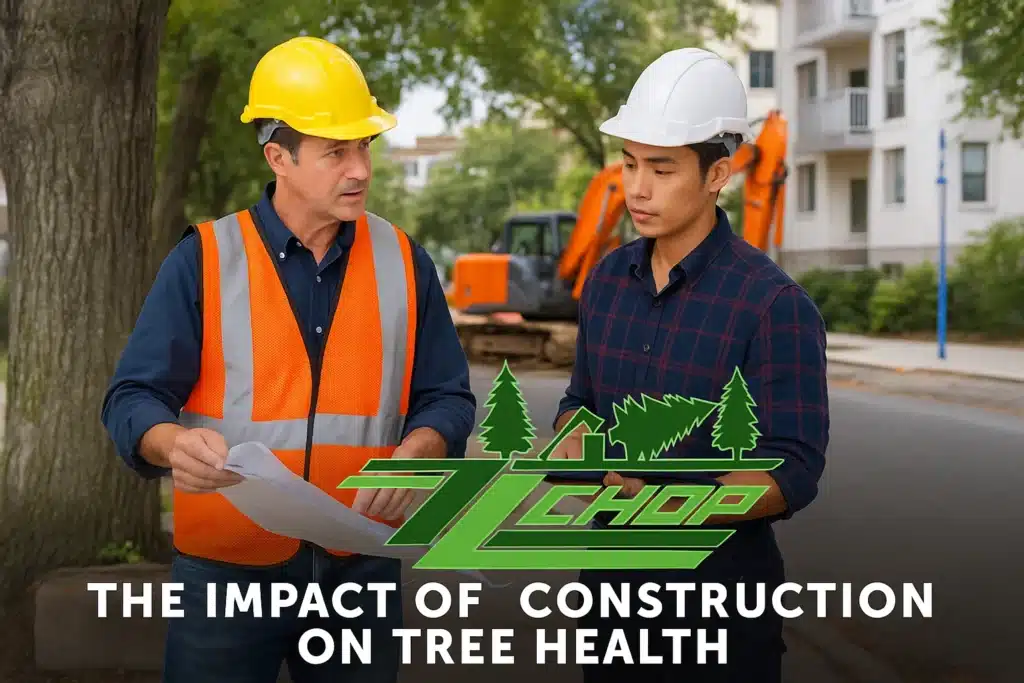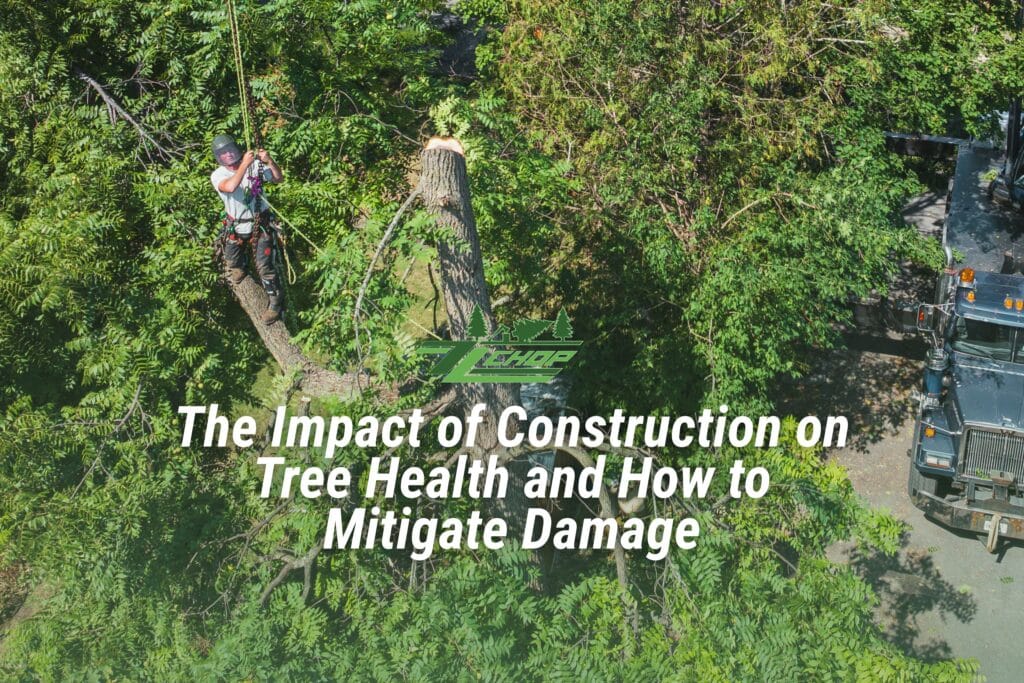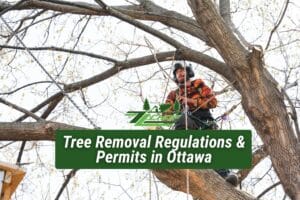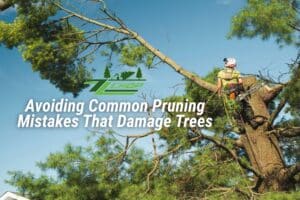Construction projects often bring excitement and progress but can also pose serious threats to the health of nearby trees. Trees are crucial for the environment, providing shade, improving air quality, and adding aesthetic value to both residential and commercial properties. However, without proper precautions, construction activities can cause irreversible damage to these vital plants.
This blog dives into the common impacts of construction on tree health and shares actionable steps to protect your trees during a project.

How Construction Impacts Tree Health?
1. Root Damage
Tree roots extend far beyond what’s visible above ground, often stretching two to three times the tree’s canopy. Construction digging or heavy machinery can damage or sever these roots, compromising the tree’s stability and ability to absorb water and nutrients.
2. Compacted Soil
Heavy machinery and equipment moving across a site can lead to soil compaction. Compacted soil reduces water and air flow to tree roots, effectively suffocating them and stunting tree growth.
3. Trunk and Canopy Injuries
Construction equipment can also make accidental contact with trees, causing wounds to their trunks or breaking branches. Such damage exposes trees to pests and infections, potentially leading to long-term health issues.
4. Changes to Soil Grade
Altering the soil level around a tree during grading can affect its ability to access adequate air and nutrients. Even slight changes can disrupt the natural balance that the tree depends on.
How to Mitigate Construction Damage to Trees?
1. Plan with a Tree Assessment
Before construction begins, hire a professional arborist to assess the trees on your property. They can determine which trees are most at risk and provide recommendations to protect them during the project. For example, at ZZ Chop Tree Care, we specialize in detailed tree health assessments to ensure the safety and longevity of your trees.
2. Establish Tree Protection Zones
Set up physical barriers around tree roots, trunks, and canopies to ensure heavy equipment stays at a safe distance. Tree protection fencing is an easy and effective way to prevent accidental damage during construction.
3. Minimize Soil Disturbance
Keep construction activity outside the dripline of the tree (the outer edge of its canopy) to avoid damaging vital roots. If soil excavation near a tree is unavoidable, consult with an arborist about strategies like root pruning to minimize harm.
4. Avoid Soil Compaction
Designate specific pathways for construction vehicles and machinery to limit soil compaction. Additionally, consider using materials like mulch to mitigate the impact of heavy equipment on the ground.
5. Maintain Tree Health During Construction
Provide extra support to your trees by keeping them well-watered and mulching areas around their base to preserve moisture. Fertilizer or pest control treatments may also help strengthen trees during this stressful period.
6. Post-Construction Care
Once construction is finished, have an arborist inspect the trees for any potential damage. Addressing smaller issues early, such as minor root injury or trunk wounds, can prevent long-term health problems.
How Construction Projects Can Negatively Impact Trees?
Construction projects can have significant negative impacts on trees, often leading to long-term health issues or even tree death. Heavy machinery, soil compaction, and root damage during excavation or grading can severely weaken trees, while changes in drainage or exposure can stress them further.
- Soil compaction limits oxygen and water absorption for roots.
- Root cutting or trenching can destabilize and stress trees.
- Changes in sunlight or water flow may affect tree growth.
- Construction debris and chemicals can damage bark and foliage.
Protecting trees during construction requires careful planning and monitoring to ensure their survival and long-term health.
How To Prevent damage Tree in Construction?
Preventing tree damage during construction is crucial for preserving healthy landscapes and avoiding costly tree loss. Careful planning, such as mapping out the location of existing trees and defining root protection zones, ensures that construction activities do not harm critical root systems.
Using barriers, minimizing heavy machinery near trees, and monitoring soil conditions can prevent root compaction and trunk injury. Proper maintenance during and after construction, including watering and mulching, helps trees stay strong and resilient.
- Install Protective Fencing: Erect sturdy barriers around the tree’s drip line to keep equipment and materials away.
- Limit Excavation Near Roots: Avoid digging or grading close to the root zone to prevent damage.
- Mulch and Water Regularly: Apply a thick layer of mulch and ensure consistent watering to reduce stress on trees.
- Educate Construction Crews: Train workers on proper tree protection techniques to minimize accidental harm.
- Avoid Storing Materials Near Trees: Keep soil, debris, and heavy equipment away from sensitive root areas.
Following these preventive measures ensures trees remain healthy and stable throughout construction projects.
Best Practices During Construction to Reduce Tree Damage
Protecting trees during construction requires strategic planning, careful execution, and ongoing monitoring to minimize damage to roots, trunks, and canopies.
Here’s a professional table summarizing the best practices:
| Best Practice | Description | Benefit |
| Protective Fencing | Install barriers around the tree drip line before construction begins. | Prevents machinery and material damage to roots and trunk. |
| Root Zone Preservation | Avoid digging, trenching, or grading near the root system. | Maintains tree stability and nutrient absorption. |
| Controlled Machinery Use | Limit heavy equipment movement near trees and use designated pathways. | Reduces soil compaction and root injury. |
| Mulching and Watering | Apply mulch and water trees regularly throughout construction. | Reduces stress and promotes healthy growth. |
| Material Storage Management | Keep construction materials and debris away from trees. | Prevents root suffocation and trunk damage. |
| Crew Training | Educate workers on tree protection guidelines and safe practices. | Minimizes accidental damage and ensures compliance. |
| Post-Construction Assessment | Inspect trees after construction and provide necessary care or treatment. | Helps trees recover quickly and prevents long-term decline. |
Why Professional Tree Care Matters?
Partnering with experts during construction projects can make a significant difference in preserving tree health. At ZZ Chop Tree Care, we understand how vital trees are to your property and the environment. Our services, including tree health assessments and protection strategies, are designed with your construction goals and tree safety in mind.
Protect Your Trees for a Greener Tomorrow
Construction doesn’t have to come at the cost of your tree’s health. With thoughtful planning, professional insight, and effective care, your trees can thrive even in the midst of development projects.
If you’re embarking on a construction project and want to ensure your trees remain healthy and safe, reach out to ZZ Chop Tree Care today. Together, we can take meaningful steps toward protecting your trees and maintaining the beauty of your property.
Conclusion Conclusion
Construction projects can pose serious risks to the health of trees, from root damage and soil compaction to trunk injuries and changes in soil grade. Protecting trees during development requires careful planning, including tree assessments, establishing protection zones, and minimizing heavy machinery near critical root areas. Proper maintenance, such as watering, mulching, and monitoring soil conditions, helps trees stay resilient throughout construction.
Educating construction crews and managing material storage are essential steps to prevent accidental damage. Post-construction inspections by a professional arborist ensure that any minor injuries are addressed before they become long-term problems. By following these best practices, property owners can safeguard their trees, maintaining their beauty, environmental benefits, and overall health. Prioritizing tree protection during construction not only preserves landscapes but also promotes sustainable and eco-friendly development.
FAQS
1. How does construction affect tree roots over time?
Construction can compact soil and disturb underground root systems, which reduces nutrient and water uptake. Over time, this can weaken trees and make them more susceptible to disease and instability.
2. What are the signs a tree is stressed from nearby construction?
Signs include yellowing leaves, premature leaf drop, dieback of branches, and reduced growth. Early detection allows for timely interventions like mulching or irrigation.
3. Can tree protection barriers really prevent construction damage?
Yes, protective barriers around the drip line of a tree prevent heavy machinery and materials from harming roots, trunks, and branches. They are an effective first line of defense during active construction.
4. How soon should a tree be inspected after construction ends?
Trees should be inspected by an arborist immediately after construction and again periodically over the following months. This ensures any hidden root or trunk damage is addressed before it affects long-term tree health.




